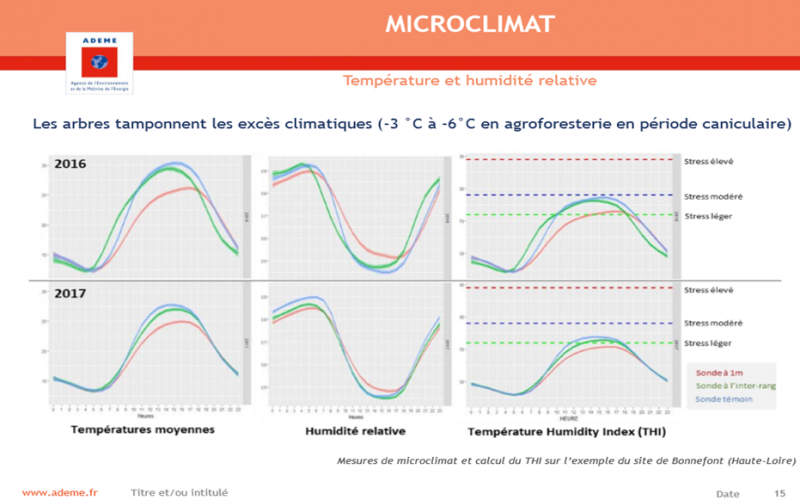Hedgerows have a lot of interactions with the crops, animals in the field and the environment. They also deliver a lot of ecosystem services.
- Integrated Pest Management
- Other wildlife
- Shade for livestock
- Carbon storage
- Impact on crop yield
Integrated Pest Management
Hedgerows are an important habitats for insects and UK hedges have been shown to support over 1,500 invertebrate species. Many of these insects are beneficial to crop production as pollinators and natural predators of crop pests.
The following guides provide information on hedgerows that attract beneficial insects for the following crops (French only):
Hedgerows are also important nesting sites and food sources for birds such as turtle doves, song thrushes and blackbirds. Numerous studies in both natural and agricultural habitats show that birds reduce pest populations (English) with a limited impact on pollinator populations.
Other wildlife
Hedgerows are a very important feature for mammals in a farmed landscape. Most species evolved to live in woodlands but have adapted to use hedgerows as shelter, feeding and as corridors for dispersal after breeding.
Three basic factors determine a hedgerows capability to support a diverse and abundant mammal population:
- The type and amount of food available; berries, seeds and invertebrates.
- The density of the hedge growth, particularly at the bottom of the hedge.
- The number of connections with other hedgerows and woods within the landscape.
Management practices that help support healthy mammal populations include:
- Let the hedge grow as tall and wide as possible.
- Encourage a dense hedge bottom and allow herbs and grasses to grow at the bottom of the hedge.
- Trim in late winter and every two-five years to maximise fruit and berry production.
- Minimise herbicide use in the vicinity of the hedgerow.
Shade for livestock
Shading is one of the most visible functions of hedges and trees in prairies. Animals grazing near hedgerows cluster around these shelters to take advantage of protection from wind and rain. During the summer season, the cattle benefit from the shade of hedgerows.

Carbon storage
In this presentation (French) you can find more information about the CARBOCAGE project. In this project the carbon storage of hedgerows where measured.
Impact on crop yield
From crop to crop, the effect of hedgerows is different. In a study in Kansas and Nebraska, winter wheat and soybeans (summer crop) responded positively to the windbreak hedge effect compared to an unprotected study area; soybean yield increased more than winter wheat (Osorio et al., 2018). This difference is explained by the protection efficiency of windbreaks during the development stages of crops. (Beetz, 2002) and (Gonzales, 2015) note that deciduous trees do not protect crops to the same degree throughout the development cycle, as they are less effective during winter due to the loss of leaves therefore winter crops are not protected during the critical vegetation phase.
Control erosion
Winter wheat and soybeans (summer crops) responded positivily to the windbreak hedge effect. More information you can find in this brochure (French).